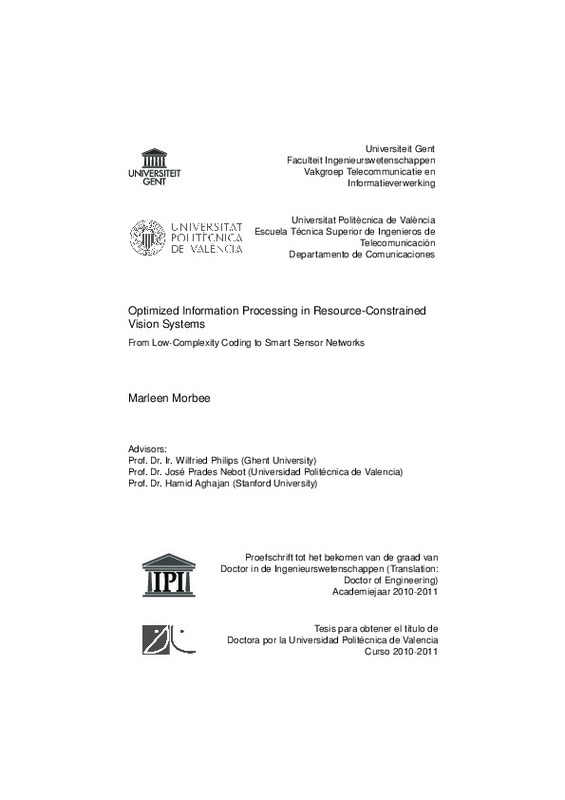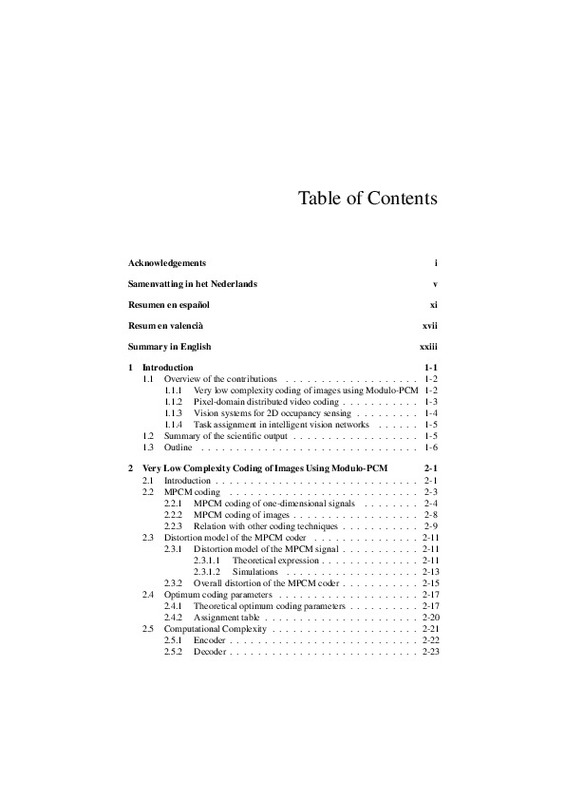- RiuNet repositorio UPV
- :
- Investigación
- :
- Tesis doctorales
- :
- Ver ítem
JavaScript is disabled for your browser. Some features of this site may not work without it.
Buscar en RiuNet
Listar
Mi cuenta
Estadísticas
Ayuda RiuNet
Admin. UPV
Optimized information processing in resource-constrained vision systems. From low-complexity coding to smart sensor networks
Mostrar el registro completo del ítem
Morbee, M. (2011). Optimized information processing in resource-constrained vision systems. From low-complexity coding to smart sensor networks [Tesis doctoral]. Universitat Politècnica de València. https://doi.org/10.4995/Thesis/10251/12126
Por favor, use este identificador para citar o enlazar este ítem: http://hdl.handle.net/10251/12126
Ficheros en el ítem
Metadatos del ítem
| Título: | Optimized information processing in resource-constrained vision systems. From low-complexity coding to smart sensor networks | |||
| Autor: | MORBEE, MARLEEN | |||
| Director(es): | Philips, Wilfried Aghajan, Hamid | |||
| Entidad UPV: |
|
|||
| Fecha acto/lectura: |
|
|||
| Resumen: |
Vision systems have become ubiquitous. They are used for traffic monitoring, elderly care, video conferencing, virtual reality, surveillance, smart rooms, home automation, sport games analysis, industrial safety, medical ...[+]
|
|||
| Palabras clave: |
|
|||
| Derechos de uso: | Reserva de todos los derechos | |||
| DOI: |
|
|||
| Editorial: |
|
|||
| Tipo: |
|
recommendations
Este ítem aparece en la(s) siguiente(s) colección(ones)
-
Tesis doctorales [5389]







![Text file [Text]](/themes/UPV/images/text.png)



